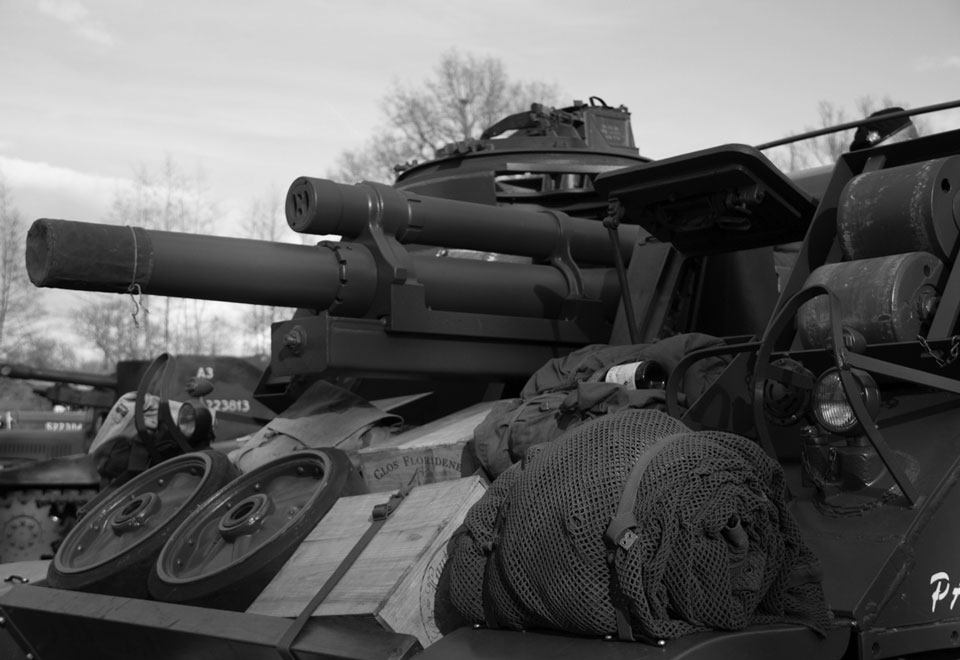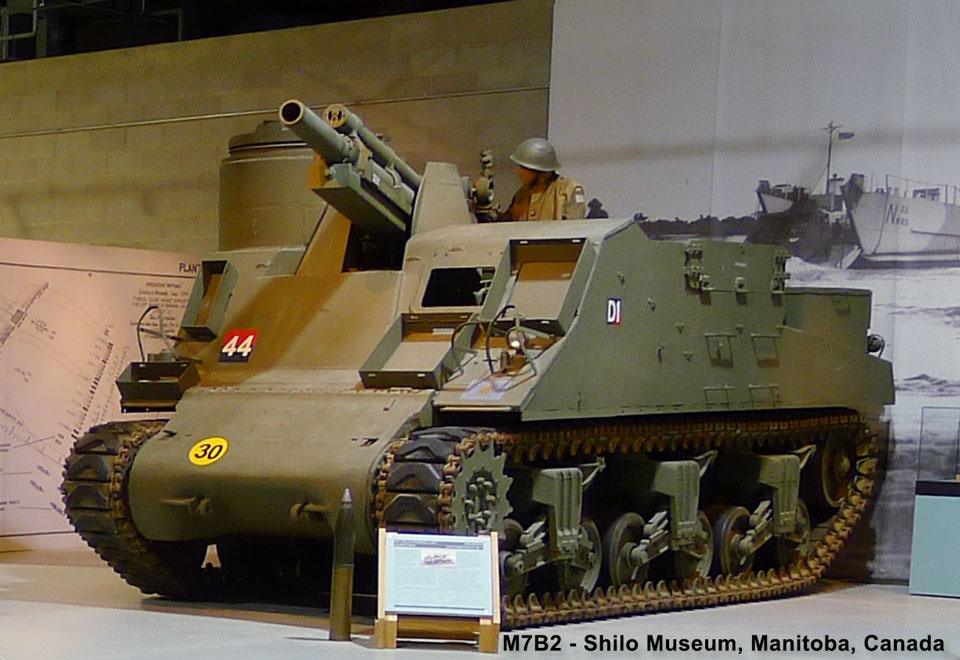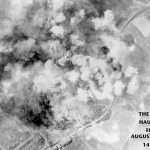The Fall of 1943, following the appointment of Lt Colonel R.H. Webb as Commanding Officer, marked the arrival of the M7 or Priest Self-Propelled gun; new training and skills were required for the 12th Field Regiment.
M7 Priest – Self-Propelled Guns – 105 mm Howitzer
The first SP the Canadians would use in action was the US M7 Priest, so called because of the “pulpit” like circular anti-aircraft machine gun mount. The Priest carried a 105 mm howitzer which used 7 different propellant charges (compared to the four of the Canadian 25 pounder Gun. No firm establishment for these vehicles was laid out, but many of these vehicles (loaned from the US Army before the Normandy Landing) were issued to the three field regiments of the 3rd Canadian Infantry Division (as well as two others). On 1 Dec 1943, there were 60 Priests held by the Canadian Army in Europe. Delays in obtaining the vehicles had resulted when some were sent to the Mediterranean. By the end of Feb 1944, however, all five self propelled regiments were fully equipped. The Priests of the divisional artillery were withdrawn by August 1944 to be replaced with towed 25 pounder guns as per the normal practice for an infantry division. A total of 72 of these Priests were converted into Kangaroo armored personnel carriers in Aug 1944.
Self Propelled Guns
were a unique type of vehicle developed during the Second World War, referring specifically to the mounting of an artillery piece (gun) to a motorized vehicle, generally, a fully tracked and armoured one. The Germans developed many types of these vehicles, not only using them as mobile artillery but also as sturmgeschützen (“assault guns”) in which they were used in a direct fire role as infantry support. Later in the war, Panzerjäger (literally “tank hunter” but translated more accurately as “antitank”) vehicles mounted high velocity antitank guns as a defense against the growing number of Allied tanks. Self propelled guns were relatively less expensive to build than a tank, as the main distinction between the two was the lack of a rotating turret. Some SPs were open-topped, others featured an armoured roof.
Canadian Usage
The Canadian Army used SPs in the same manner as the British Army, as a mobile field artillery piece. Artillery doctrine that both armies shared described a reliance on concentrated firepower. The use of SPs as direct fire weapons, be it against infantry or armour, was not seriously contemplated. The main justification for the expense of mobilizing artillery in this manner was the ability to keep up with fast moving armoured formations; for that reason, field regiments in armoured divisions were self propelled. The 3rd Canadian Infantry Division’s field regiments also converted to self propelled regiments for the assault phase of the Normandy invasion in June 1944. Self propelled anti-tank guns were also used during the Second World War and into the 1950s by the Canadian Army.
———
Links:
Memorandum of an interview with Lt Col R H Webb, June 26, 1944
Reference Link – Canadian Soldiers.com >>





























